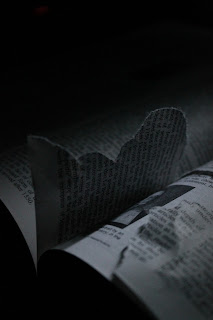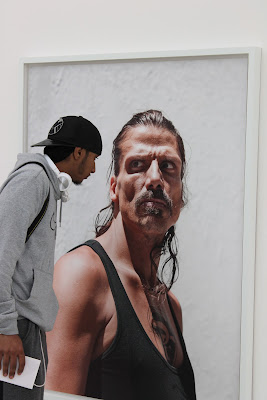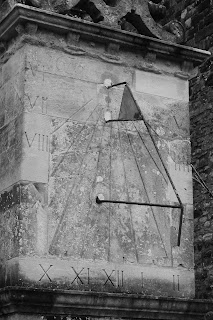In our lessons we have been given the theme of stories. This could have a variety of meaning for example teaching and learning from stories or to inform future generations of events that have happened. I researched Egyptian hieroglyphics and found out about the Rosetta Stone. It was found in 1799 by a group of french soldiers. It is believed that it is a way of translating the hieroglyphs, however nobody knew how to speak ancient Egyptian for eight centuries so did not know how to pronounce or say any of the words. The stone was inscribed with a decree that is split into three languages ancient Egyptian, Demotic script and ancient Greek, but with the same meanings. The decree established the cult of the new ruler. This is very much like what Hitler did, making sure his is the only story so everybody listens to him.

I also researched an artist named Thomas Allen. He finely cuts out pieces from books, encyclopedias and old school books to create 3D shapes that creatively tell stories. I like his photographs because of the creativity, detail and care he takes in every project that he does.

He gets many of his ideas from magazines and books that he has seen with examples that he could use.

I like the way he changes some of his images just by adding a creative title, for example, one of his images was a dog with mechanical work as its body. This confused me and I did not understand why it was there until I saw the title, 'Watch Dog' which I found funny and clever.

In the lesson I tried some experiments with a book and trying to photograph the book in different ways to see how I could portray the book. I started in the dark room and trying a variety of shutter speeds to get the correct lighting.
I then ripped part of a page and lifted it to see if it would create a shadow or change the light.



After I came out of the dark room, I was trying to think of other things I could do with the book so I searched through some of Thomes Allen's photos and found one of the corner of a book with a sentence highlighted.

I thought that I could try something similar to this and opened the book on a random page and circled powerful and strong words such as 'life' with a red pen. I started by only doing the bottom corner of the page but gradully did more so I did the bottom third with all the columns however I folded two of the pages so the three columns were from different pages.




Adde Adesokan
I researched a street photographer called Adde Adesokan. I enjoy looking at his photographsAfter looking through some of his images, I found that in many of his photos it shows emotion and you get a variety of feelings from the photographs.
When I saw this photograph I immediately thought of loneliness and sadness. I think this is because of the lighting, use of shadow and positioning of the man and how he is looking down at the floor which often represents the man being upset.

The next image made me think of curiosity and also being frightened. It reminds me of when a child has done something wrong and is hiding from their parents. It also reminds me of when my brother would chase me and I would slowly sneak back into the room. Along with many of his photographs it makes me think of loneliness. The way the light is used in this photograph changes the way the eye is lead around the image. Without the strong light on the girls faces with darkness surrounding her then the eye might be lead to what the girl is holding instead of the facial expression of the girl.

Many of his photographs use the idea of the unknown by covering peoples faces with an object or darkness which creates the feeling of sadness or loneliness. It also takes away the distraction of faces because they can change the focus of the image so people look at the face instead of the person or what the intention of the photographer is.



London Trip
We went to London on a school trip for a day. We visited the Saatchi Gallery and the Tate Modern. We started by visiting the Saatchi Gallery. I enjoyed going there and whilst I was there I tried a mini experiment of trying to keep the camera in the same place and taking a photograph of the room every 10 to 20 seconds.
I thought that this worked well, however, if I tried this again, I would try to use a tripod and keep the same time difference between each shot.







I did take more photos however I selected these because they showed the change over time and I liked how the series of images finishes with only one person in the photograph creating a feeling of isolation which goes with the plain black clothes in the white room.
When I walked around the gallery I spotted some cardboard cut-out artwork of people. I thought of the work we did about Stephen Gill and his project of taking photos of the back of billboards so I tried this by walking around the back of the cardboard and taking photos.


Next time I would make sure there were no distractions from the subject in the back ground, I would have done this however I could not see this until after I left and was looking back through the photos.
I took some photos of peoples reactions to photographs or what they are doing when looking at the artwork.





When taking the next photograph I had the intention of taking a photo of somebody taking a photograph of somebody else capturing the image on the wall. However, when I looked back at this I noticed that the positioning of the people changed the way they look so it is as if the first person in not photographing the second person.

Towards the end I walked in to one of the rooms that was very loud and noisy so to show this in my picture I used a slow shutter speed to represent chaos.
The Tate Modern
The Tate Modern had a different type of artwork in their Turbine Room this year. It was performance art with paid performers to interact with visitors and move around and sing in obscure ways. Tino Sehgal Created this exhibition and choreographed it using movement sound and conversation.
Around the Turbine Room some of the actors would come and talk to visitors and tell them a story. I thought that I could use these stories and try to create a photography project from the topic of the story for example, the first story I was told was about the man when he was in boarding school and throughout the story he kept repeating 'split-second decisions'. I thought about this theme of decisions and thought of how people make decisions by flicking a coin. I used a 10p coin because of the smooth shape and it is shiny. I used a black background with light shining from the left hand side because the shutter speed was so high. I used manual focus and flicked the coin in front of the camera whilst attempting to photograph the coin sharply in mid-air.

However when I was flicking the coin, in many of the photos my hand was in the image and it was difficult to judge if my hand was in the image when flicking the coin.

It was also difficult to get the right shutter speed to stop the coin being blurred and to flick the coin the right distance away from the camera to keep the focus. To try to solve this I made the shutter speed higher and the light closer to try to keep the same lighting.
This helped with the sharpness of the coin but there was not enough light. I decided to make my shutter speed a bit slower again and used two coins to see if I could capture both coins in the air.
Because I was having to try to get both coins in the picture I could not get many good, clear photos and I was running out of time because the lesson was about to end.
I also tried flicking the coin in front of the light. This created a silhouette of the coin and was different from the other photographs because it changed from a bright coin with the dark background to a dark coin with a bright background.
I prefer the first images because they gave detail of the coin where as the silhouette just looks like there is a hole in a piece of paper.
After going to the Saatchi Gallery, I still had the idea of long shutter speed in my head and thought that I could try this to capture the movement of the performers.
To keep the camera still I had to rest it on the floor because I did not have a tripod with me. Because I was on the floor, I thought of capturing the movement of feet as the performers walked around me.
When the performers were running around, I noticed that they would go in groups and chase one of the people in that group. I tried to show this with a fast shutter speed instead of the slow shutter speed that I was using earlier.
As I looked around the museum I found a small room where two projectors where facing each other to create different shadows on the opposite walls when people walk in to the lights. This was challenging to take photos in because of the dark lighting with the bright projections so I placed the camera on the floor and rest the lens on my phone so that I could see the lights rather than all of the floor.
Triptychs
The Red Balloon
In my lesson I was given a photograph and had to create a triptych using this image. The photograph I got is of a red balloon on by the water side. I went to a local party store and bought some red balloons and walked to Hengistbury Head to look for inspiration. As I walked around I had the idea different varieties of people on a bench such as older couples and younger couples. I realised this would be difficult to link to the original image so I took some photos and moved on. I had the idea of the story of how the balloon got there or where it has travelled from. After experimenting with a variety of images I eventually came up with a triptych.

I used these two photographs because I feel they create a story and a journey. The final image was the after affects of my neighbour's dog getting the balloon and when I saw this I instantly thought I could use this as the final image in my triptych. The first image I had planned when I bought the balloons but doing this meant I only had one chance to capture as many photographs as possible.
I also had the idea of the balloon landing in a tree then moving on to the given image. However, I felt this could not work with the other images.
























































